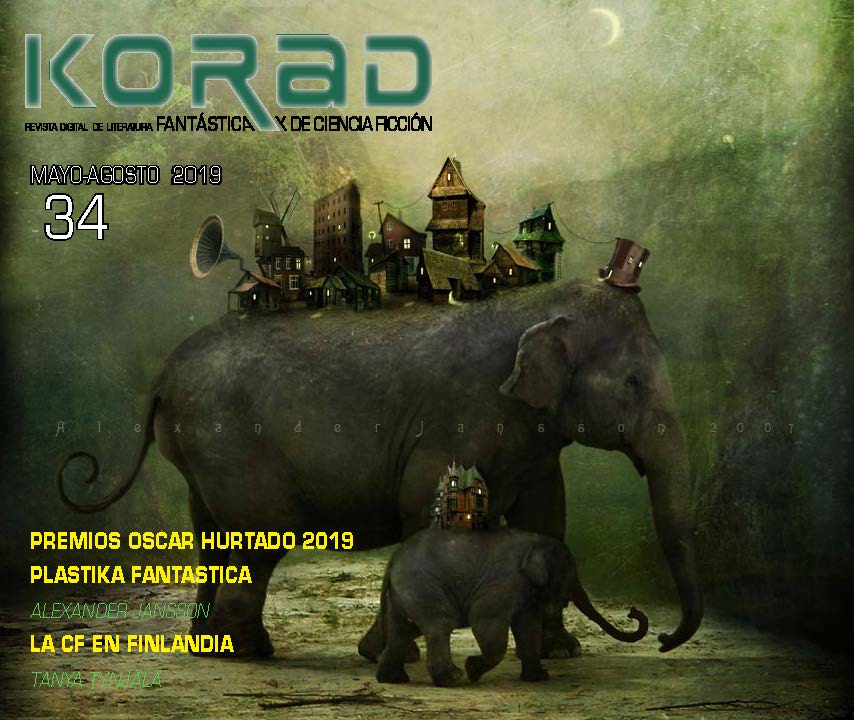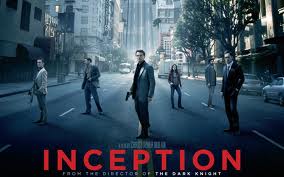Last week, I forgot to put in my discussion of 3D on TV & movies something I saw on TV in 1984 or 1985. A pair of professors from Georgia or somewhere like that had invented a super-secret kind of TV camera (when interviewed about it, they had the camera covered by a plywood box with a hole for the two lenses) that could record 3D moving pictures that could play in 3D on an ordinary television! The show about them had a series of short videos that not only played in 3D on my decidedly non-3D TV, I also recorded and could play them back in 3D on my Sony Betavision video recorder. The sequence I remember vividly was a couple of people playing Frisbee in a field, framed by trees. It was distinctly three-dimensional. The only thing was, the whole video waved up and down slightly. The professors promised that in a year or two there would be a commercial version. I never heard another thing about it, and I gave my Beta recorder and all the tapes (including a very rare Star Wars bootleg) away when I moved to Canada. I wonder if any of you saw this program or know what happened to the inventors and their invention?
We now return you to our regularly scheduled column.

Sorry, just kidding; this has nothing to do with Johnny Cash except the title. Back in the year 2000 or so, a guy named Eric Flint (Figure 1) wrote a time-travel story—of a sort—and published it via Baen Books as a paperback. Nothing unusual about that, right? Hundreds of people have published paperbacks, many of them time-travel books, I’m sure, from Baen Books. But one thing was different about this particular book.
The book (Figure 2) was called 1632, and it was an odd little story about a small town in West Virginia called “Grantville,” that was cut out of its cozy year-2000 surroundings (a sphere approximately six miles in diameter) and exchanged wholesale with an equal volume of space in 1632 Germany—yeah, that Germany. In Europe. An area called “Thuringia” (southwest of Leipzig; west of Dresden and Prague), in the throes of the Thirty Years’ War. For the hundreds of inhabitants of Grantville, many of whom were attending a wedding in town that day, life would never be the same; the approximately eight inhabitants of that other six-mile sphere were already dead because of the war; their crude (by modern-day standards) farmhouses despoiled and ravaged. Because the twentieth century we know could not exist in a world where the past had been altered, Grantville’s universe immediately split off into a universe and timeline of its own, and the inhabitants of Grantville immediately set off—without realizing it at first—to change the history shown in their schoolbooks to something completely unknown and unknowable. This dislocation was known as the “Ring of Fire.” (Henceforth, ROF.)
Well, being somewhat of a history buff—more of Egyptology than 17th-century Europe—but history is fascinating, because it’s all part of where we came from and how we got to be who and where we are, right? I read that book fourteen years ago, and enjoyed it. But who would have guessed that it would strike such a chord in readers’ hearts and minds? It’s not just the clash between modern technology and 17th-century; it’s also the clash in attitudes: how attitudes towards everything—including American ideas of personal freedom and individual worth—have changed in the ensuing 300 years, and so much more.

Partly because history is so complex that you can’t tell even a small portion of it in one novel when you’re changing history as we know it, Flint (with David Weber) wrote a sequel, 1633, which was just as well-received. And a “shared world” began being shaped, not only by Eric Flint, but also by Weber, K.D. Wentworth, Mercedes Lackey and a bunch of other talented writers. As Flint explained, “History is complicated. It is not the story of a few people, it is the story of an immense number of people—each of them full individuals in their own right, each of them having their own greater or lesser impact on developments.”
SF/F inspires fan fiction. Some fanfic is dreadful—badly-written rehashes of TV and movie plots with no characters, settings or plots worth noticing—and some of it is near-professional quality; after all, a pretty good number of fans have become pros over the last hundred years—and some of it is absolutely professional quality, worth publishing. The latter two categories are where most of the fans-to-pros come from for our genres. And sometimes those would-be writers send their efforts to the publishers; and some publishers, like Baen Books, maintain bulletin boards and discussion boards online for those active fans; and at any rate, sometimes enough publishable stories end up sparking an original anthology—by the original publisher—of fiction in someone else’s universe using that writer’s characters. And that’s what happened here.
Discussion of the book began immediately on Baen’s board and continued, and fan-submissions began piling up—many of them absolutely publishable, and as soon as there was enough fiction from both fans and pro writers about what was obviously a fascinating idea—and hardly well-explored from just one novel—that a shared-world anthology was published, including stories by all the people mentioned here and a few more. And, had that been it, this column would have been a heck of a lot shorter. The anthology (Figure 3) was called Ring of Fire. Shared universes are not a new idea; comics did it first, then various SF/F writers, including H.P. Lovecraft (“The Cthulhu Mythos”); Marion Zimmer Bradley (Darkover): Robert Lynn Asprin (Thieves World); C.J. Cherryh (Merovingen Nights) and others.

Let me step aside for a moment and let the editors—editors of what?—you’ll find out in a minute—speak:
“The decision to publish the Ring of Fire anthology triggered the writing of still more fanfic, even after submissions to the anthology were closed. Ring of Fire has been selling quite well since it came out, and a second anthology similar to it was published late in 2007. Another, Ring of Fire III, is also in print. It also contains stories written by new writers, as well as professionals. But, in the meantime… the fanfic kept getting written, and people kept nudging Eric—well, pestering Eric—to give them feedback on their stories.
Hence… the Grantville Gazette. Once he realized how many stories were being written—a number of them of publishable quality—[Eric] raised with Jim Baen the idea of producing an online magazine which would pay for fiction and nonfiction articles set in the 1632 universe and [which] would be sold through what at the time was called Baen Books’ Webscriptions service. That has since become Baen Ebooks at this url: https://www.baenebooks.com. Jim was willing to try it, to see what happened.
As it turned out, the first issue of the electronic magazine sold well enough to make continuing the magazine a financially self-sustaining operation. Since then, even more volumes have been electronically published through the Baen Webscriptions and Baen Ebooks sites. As well, Grantville Gazette, Volume One was published in paperback in November of 2004. That has since been followed by hardcover editions of Grantville Gazette, Volumes Two, Three, Four, Five and Six.
Then, two big steps: First: The magazine had been paying semi-pro rates for the electronic edition, increasing to pro rates upon transition to paper, but one of Eric’s goals had long been to increase payments to the authors. Grantville Gazette, Volume Eleven was the first volume to pay the authors professional rates.
Second: There are several different versions of each issue of the Gazette. It is now available through Baen E-books, Amazon and B&N, plus other methods. The on-line version, depending on timing, might still be in ARC status. That’s Advanced Reader Copy. Our publications dates are 1 Jan, 1 Mar, 1 May, 1 Jul, 1 Sep and 1 Nov. In between issues, here at https://www.grantvillegazette.com you’ll often be reading the electronic version of an ARC, where you can read the issues as we assemble them. You’ll see the art and the stories as they are prepared for publication.
How will it work out? Will we be able to continue at this rate? Well, we don’t know. That’s up to the readers. But we’ll be here, continuing the saga, the soap opera, the drama and the comedy just as long as people are willing to read them.”

Thanks, editors. And fiction is just the tip of the iceberg here. First, let me say that I’m one of those people who asks—nay, demands!—some reality with my fiction (whether it be book-based, TV-based or movie-based fiction); I get really snarky (and that’s the lightest description for how ticked off I can get) about fiction that violates every known precept of physics, history, physiology, psychology, etc., without any justification for it. (Just for one tiny example: in Guardians of the Galaxy, when Groot shoots out a long root, piercing ten or twenty bad guys and then waving them around, was I the only person saying, “Wait a minute… where’s his leverage? And where does he get the mass to extend his root/tentacle/branch/whatever the heck it is without diminishing his own body mass?”) Well, you don’t find that in Grantville Gazette or 1632 or any of the related novels (of which there are now a whole bunch, by Flint and/or any number of people). They try to put in reasonable explanations in the fiction and—here’s the kicker—there are long articles explaining just how, scientifically, historically and accurately, uptime (as they call it) science and technology can be integrated into the 17th century!
Okay, just for an example: in GG #50, there is a 26-page (part one) discussion of plague in the 17th century written by Iver P. Cooper; it begins with a several-page description of the types of plague that were endemic to that time and place. It then segues into “down-time” reasons that plague was thought to exist and be carried from person to person, place to place; then talks about the economic and social dislocation caused by the plague. It then details the actual pre-Ring of Fire response to the plague, followed by (in GG #51) a detailed description of the plague bacillus (Yersinia pestis), its life cycle and extremely detailed descriptions of what is known (both pre-ROF) of its carriers and transmissions. Then, finally, how up-time science and medicine deal with the plague and its transmission, followed by the probable impact of such on the seventeenth century. And everything is buoyed up by meticulous detailing of sources. And that’s just one article out of fifty-odd; articles have ranged from Naval Armament and Armor (a several-part/issue dissertation, due to the complexity of the subject) to the Grantville School System (and seventeenth-century equivalents) to Marine Radio in the 1632 Universe; and so on. Not only are these non-fiction articles heavily sourced and footnoted, but some of the stories—the ones likely to raise questions about authenticity—are too. It’s enough to make both a history fan-boy (or –grrl) and story fan-boy (-grrl) slaver! (I should know, I’m both history- and story-fan boy!)

And if that’s not enough, each issue contains a column by Kristine Kathryn Rusch, multiple award-winning writer, ex-editor of The Magazine of Fantasy and Science Fiction (F&SF), editor and publisher of much else, including Pulphouse Press books and practically everything else you can think of. She’s not only a terrific writer, but she’s married to one of my oldest writing friends, Dean Wesley Smith. These columns are fun and informative and worth the admission price by themselves!
And besides the stories dealing directly with the ROF, there are usually stories dealing with the Time Spike, an offshoot of the same event (called Assiti Shards) that created the ROF. There are serial stories for both events, too.
So how much does all this cost? Well, you have to pay at least paperback prices to get copies of some of the ROF books—Amazon.com is one place to get them. But if you want the cheapest possible way to read the whole series, you should subscribe! For the mere sum of $4.50 a month, you can become a subscriber and read all 56 (at this writing; however, an ARC of #57 will be coming your way for free as soon as it’s complete) books for free! (Well, sort of. Right this minute, about ten of them are unavailable, but they will be coming back, as far as I know.) Again, the URL is https://www.grantvillegazette.com. Oh, and there’s a fan site/discussion board available at https://1632.org, if you’re interested.
But wait! What about writing your own ROF stories? Well, the above URL has an Authors’ Manual, writing guidelines and a whole lot more. If you feel you have the chops to write this kind of fiction, go to 1632.org and have at it!
And you guys like reading free (ABSOLUTELY FREE!) SF/F, right? Did you know that on Baen Books’s website, there is a whole library of free ebooks ready for download, including the first of the 1632 series: 1632! And if you’re an Honor Harrington fan, there are David Weber books too! Also, Sharon Lee & Steve Miller, John Ringo, Andre Norton, David Drake and so much more! Let’s have a big round of applause for Baen Books, shall we?
I CAN’T HEAR YOU!
I said, let’s have a big round of applause for Jim Baen—whom we all miss—and Baen Books! Great! Thank you!
Okay, that should do it for this column.
I’d appreciate it if you’d comment on this week’s column (or blog entry). If you’ve already registered, go ahead and comment here, or comment on my Facebook page, or in the several Facebook groups where I publish a link to this column. If you haven’t registered—it’s free, and just takes a moment—do that first, then comment. I might not agree with your comments, but they’re all welcome, and don’t feel you have to agree with me to post a comment. My opinion is, as always, my own, and doesn’t necessarily reflect the views of Amazing Stories or its owners, editors, publishers or other bloggers. See you next week!











Recent Comments